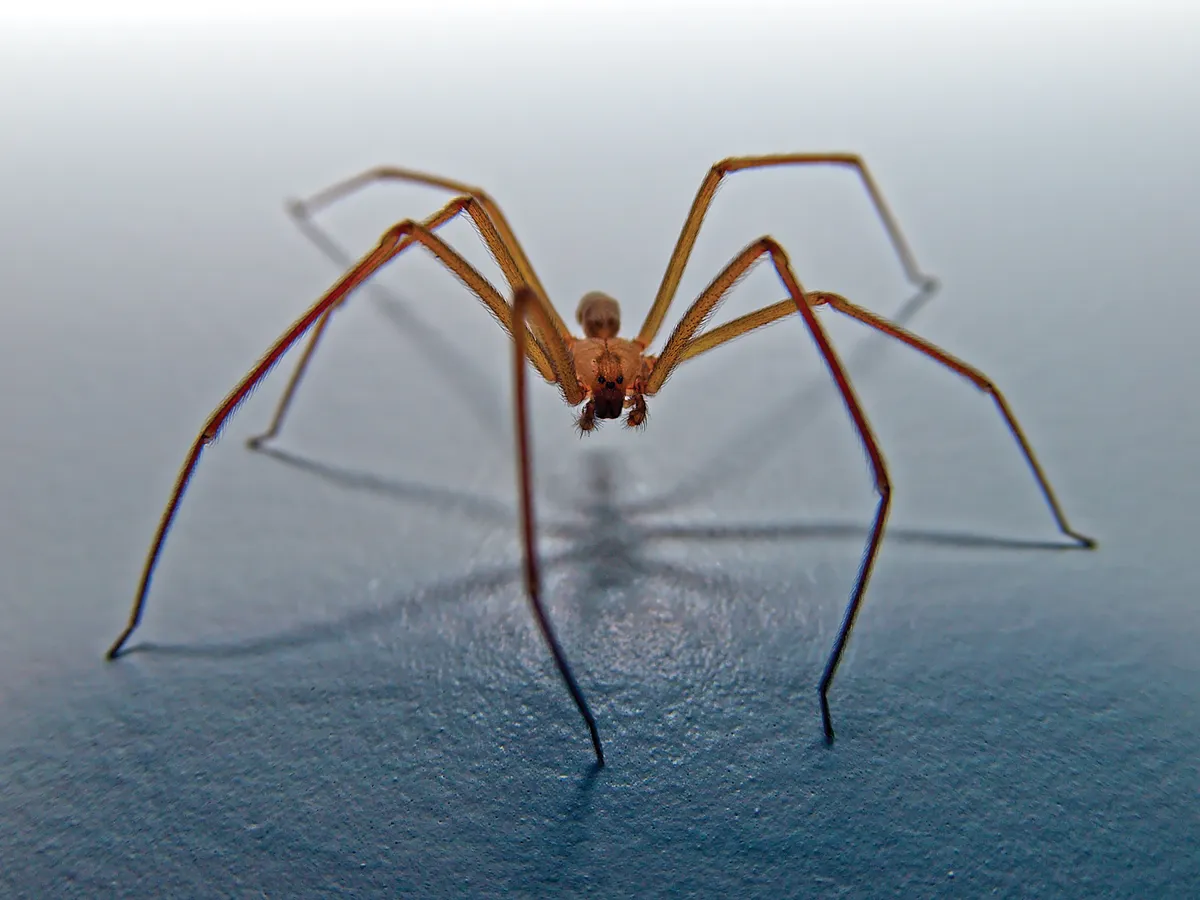Spiders list among some of the most feared animals on earth, but is this reputation fair? It is true that some, including all on this list, can inflict a painful bite in the right conditions, but there are many myths surrounding venomous spiders and their perceived deadliness.
Firstly, it is not the case that there are a few scary venomous spiders and the rest are venom free. In actuality the vast majority of spider species produce venom, and for a very good reason. Like many venom-producing animals, the true purpose of spider venom is to subdue small prey (and not to harm humans!) - it is primarily an insecticide. Learn about the difference between venomous and poisonous
Secondly, despite what you may have heard, there is actually no species of spider that can rightly be described as deadly. It is true that a few people have died after being bitten by a spider, but this is extremely rare (perhaps less than three deaths a year), and there is no species that is capable of deadliness in more than a handful of incidences.
As you will learn, even those with extremely potent venom aren’t always capable of delivering it or may not deliver any at all in any given bite. Truly deadly spiders are the stuff of movies, fortunately!
Most venomous spiders
Sydney funnel-web spider (Atrax robustus)

Found, as the name suggests, in and around Sydney, this native Australian spider is known as “the world’s deadliest spider”. This title may however be a bit dramatic. Although this species does have a very potent venom that is in some cases capable of being lethal to humans, very few people are bitten by them, and there has not been one recorded death since an antivenom was developed in 1980.
Additionally, it is thought that it is only the venom of males that is very potent. They should however still be avoided if possible, as the venom has a neurotoxin component that acts on the nervous system and symptoms of envenomation include severe pain, muscular twitching, and breathing difficulty.
Brazilian Wandering spider (Phoneutria genus)
These impressively sized spiders (among the world's biggest spiders) are also known as banana spiders, due to their habit of hiding in dark, moist places such as within the leaves of banana plants.
Like the funnel-web spider, this species is also capable of producing a very potent and potentially lethal venom but is again not nearly as deadly as you might expect.
This is in part because it is able to bite without delivering its full venom load, allowing them to save it for when it is really needed. These bites may either deliver no venom or only a small amount. One study suggested that only 2.3% of known bites were serious enough to require antivenom treatment. Nevertheless, there are a few reported fatalities, mainly in children.
Redback spider (Latrodectus hasselti)
One of the most notoriously dangerous spiders is the redback or Australian black widow. Historically they have been responsible for more envenomations requiring antivenom treatment than any other animal in Australia. Like its relative, the funnel web, it carries a neurotoxin venom that affects the nervous system, with bite symptoms including intense pain, severe sweating and vomiting. The combination of symptoms caused by this and other Latrodectus species is a syndrome known as latrodectism. Although extremely unpleasant a redback bite is very unlikely to kill you however. Only one person, and with a preexisting condition, has been killed by a redback bite since the development of antivenom.
Lycosa tarantula

Despite the name, this species is not really a tarantula! The name tarantula generally refers to spider species in the Theraphosidae family, to which this does not belong. It is better called the tarantula wolf spider, as it belongs to the wolf spider family - a group of solitary and agile hunters.
They are considered to be dangerous because they produce venom, and their large fangs can inflict both a fairly nasty wound and considerable panic from victims. In reality, however, the bite is not much more painful than a bee sting, and not particularly toxic.
Learn more about the arachnid group
Brown recluse spider (Loxosceles reclusa)

Found in the south-eastern United States, this small spider is well known and feared for its venom, and yet is not particularly dangerous in reality. The vast majority of brown recluse bites do not require treatment and heal without too much trouble.
If you are particularly unlucky it may however cause the horrible sounding (and likely feeling) injury dermonecrotic arachnidism due to its necrotic venom. One study found that 37% of clinically diagnosed brown recluse bites resulted in skin necrosis around the injury site, including blisters, gangrene, and skin sloughing. Not pleasant!
Chilean recluse (Loxosceles laeta)

This South American relative of the brown recluse should invoke more fear. Not only is it bigger, it also carries a much more potent venom, and can even be deadly. Also having necrotic properties, its venom can similarly induce dermonecrotic arachnidism, but it may be much more severe with this species. In about 15% of cases a rare illness called systemic visceral loxoscelism can result, which can cause red blood cells to rupture, kidney failure, and eventually death (in 3%–4% of cases).
Southern black widow (Latrodectus mactans)

No list of venomous spiders would be complete without a mention of the iconic and much-feared black widow. Black widow spiders are not one species, but a fairly broad genus found on every continent of the world bar Antarctica. This particular member of the group is native to North America. These spiders often make their homes close to people, spinning their strong silk webs in dark corners of buildings, leading to quite a high number of bites. Fear not, however, although the venom of this spider does affect humans, even if you are bitten you will likely be just fine. Only mature females are capable of injecting humans with venom, and even then, it may only be a small amount. Although deaths have been reported they are exceedingly rare, and bites are only really dangerous to the very young or old.
Brown widow spider (Latrodectus geometricus)

Another member of the Latrodectus genus, this ‘cousin’ of the black widow can be found worldwide. Their pleasing scientific species name is in homage to the handsome geometric patterns found on their abdomens. They are smaller and lighter in colour than black widows, and despite the name can be anywhere from tan-brown to grey and black.
They have a similar potent neurotoxic venom to black widows but are less dangerous still, as they are not able to deliver the same amount of venom in a bite. It has been suggested that these spiders are actually an invasive species in the US (thought to originate in Africa or South America) and are a threat to native black widow species. Given they are less toxic, this could be a welcome development from a human perspective…
Mouse spiders (Missulena genus)

Your first question is probably why on earth are they called mouse spiders? They look nothing like mice after all. Do they perhaps prey on mice, with a naming style similar to bird-eating spiders? Not that either!
The name is in fact due to a now disproven belief that they can dig deep burrows like mice. They do live in burrows, but they only extend about 30cm, so not quite mouse-like.
These spiders can also have grey ‘furry’ abdomens which may also be behind the name. They can inflict a painful venomous bite but despite the venom being very potent they are not very dangerous to humans. They are not particularly aggressive or likely to bite and like the Brazilian wandering spider they may do a so-called ‘dry bite’ without any venom.
White-tailed spiders (Lampona cylindrata)

The name of this Australasian species is easier to understand - they have whitish tips at the ends of their furry abdomens. Like most species on this list, they have an outsized reputation relative to their actual danger to humans. In this particular species myths have arisen that they cause gruesome necrotic ulcers (necrotic arachnidism) and are ‘flesh-eating monsters’, but there is actually no evidence to support this. A white-tailed spider bite is only likely to inflict localized swelling and itchiness and some pain.
Learn more incredible spider facts





